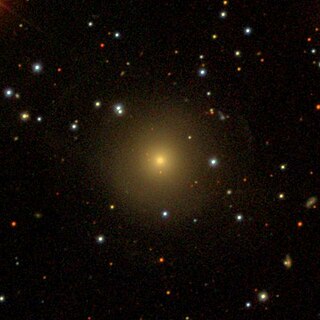
NGC 7315 is a lenticular galaxy in the constellation of Pegasus. It was discovered on 11 September 1872 by Édouard Stephan. It was described as "very faint, extremely small, round, brighter middle" by John Louis Emil Dreyer, the compiler of the New General Catalogue.

NGC 3632 and NGC 3626 is an unbarred lenticular galaxy and Caldwell object in the constellation Leo. It was discovered by William Herschel, on 14 March 1784. It shines at magnitude +10.6/+10.9. Its celestial coordinates are RA 11h 20.1m, dec +18° 21′. It is located near the naked-eye-class A4 star Zosma, as well as galaxies NGC 3608, NGC 3607, NGC 3659, NGC 3686, NGC 3684, NGC 3691, NGC 3681, and NGC 3655. Its dimensions are 2′.7 × 1′.9. The galaxy belongs to the NGC 3607 group some 70 million light-years distant, itself one of the many Leo II groups.

NGC 31 is a spiral galaxy located in the constellation Phoenix. It was discovered on October 28, 1834 by the astronomer John Herschel. Its morphological type is SB(rs)cd, meaning that it is a late-type barred spiral galaxy.

NGC 4780 is an intermediate spiral galaxy within the constellation Virgo. It is located about 166 million light-years away from the Sun. It was discovered in 1880 by the astronomer Wilhelm Tempel.
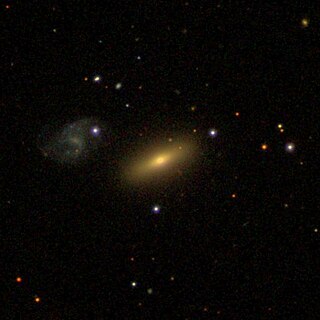
NGC 42 is a lenticular galaxy in the Pegasus constellation. It was discovered on October 30, 1864, by the German astronomer Albert Marth. It may be gravitationally interacting with the nearby NGC 41.

NGC 1728 is a spiral galaxy in the constellation Eridanus. The galaxy is listed in the New General Catalogue. It was discovered on November 10, 1885 by the astronomer Edward Emerson Barnard.
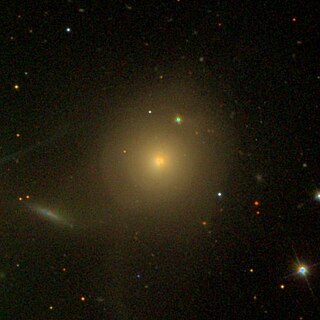
NGC 467 is an unbarred lenticular galaxy in the constellation Pisces. It was discovered on 8 October 1785 by William Herschel.
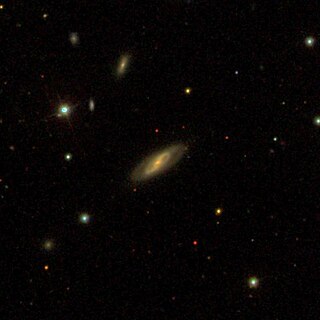
NGC 74 is a lenticular galaxy located in the Andromeda constellation. It was discovered on 7 October 1855 by Irish astronomer William Parsons.

NGC 75 is a lenticular galaxy estimated to be about 260 million light-years away in the constellation of Pisces. It was discovered by Lewis A. Swift from the USA in 1886 and its magnitude is 13.2.
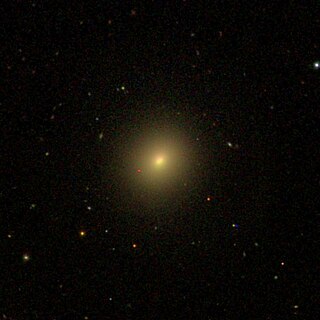
NGC 113 is an unbarred lenticular galaxy located in the constellation Cetus. It was discovered by German astronomer, Ernst Wilhelm Leberecht Tempel, on August 27, 1876.

NGC 115 is a barred spiral galaxy located in the southern constellation of Sculptor. It was discovered by the British astronomer John Herschel on September 25, 1834. The galaxy is approximately 85 million light-years from the Sun, and is about 50,000 light-years in diameter, nearly half the size of our home galaxy, the Milky Way.

NGC 178 is a Magellanic spiral galaxy in the constellation of Cetus. The compiler of the New General Catalogue, John Louis Emil Dreyer noted that NGC 178 was "faint, small, much extended 0°, brighter middle". It was discovered on November 3, 1885, by Ormond Stone.
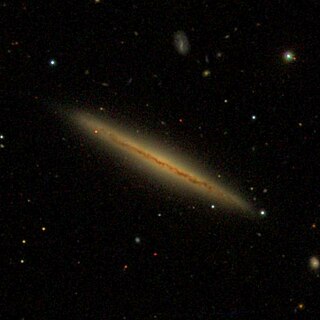
NGC 5470 is an edge-on spiral galaxy located between 43 and 68 million light-years away in the constellation Virgo. It was discovered by astronomer John Herschel in 1830. It is a member of the Virgo III Groups, a series of galaxies and galaxy clusters strung out to the east of the Virgo Supercluster of galaxies.

NGC 479 is a spiral galaxy in the constellation Pisces. It was discovered by German astronomer Albert Marth on October 27, 1864. It is about 240 million light-years away from Earth.

NGC 1326 is a lenticular galaxy in the constellation Fornax, 63 million light-years away. It was discovered by English astronomer John Herschel on 29 November 1837. It is a member of the Fornax Cluster, an NGC 1316 subgroup and has a diameter of 70 000 light-years.

NGC 4380 is an unbarred spiral galaxy located in the constellation of Virgo. Located about 52.2 million light-years away, is a member of the Virgo Cluster, a large galaxy cluster. It was discovered on March 10, 1826, by the astronomer John Herschel.

NGC 880 is a spiral galaxy located in the constellation Cetus about 590 million light-years from the Milky Way. It was discovered by the American astronomer Francis Leavenworth in 1886.

NGC 5619 is an intermediate spiral galaxy in the constellation Virgo. The galaxy was found on April 10, 1828, by the British astronomer John Herschel. It is located about 390 million light-years away from the Sun.

NGC 532 is a spiral galaxy in the constellation Pisces. The galaxy is approximately 100 million light-years away from the Earth, and was discovered on September 21, 1786, by the German-British astronomer William Herschel.

NGC 3902 is an intermediate spiral galaxy in the constellation Leo. It was discovered on April 6, 1785, by William Herschel and observed on February 19, 1827, by John Herschel. It is estimated to be 180 to 185 million light-years away, and its redshift-independent distance estimates to about 185 to 240 million light-years. It is around 75,000 light-years in diameter.




















